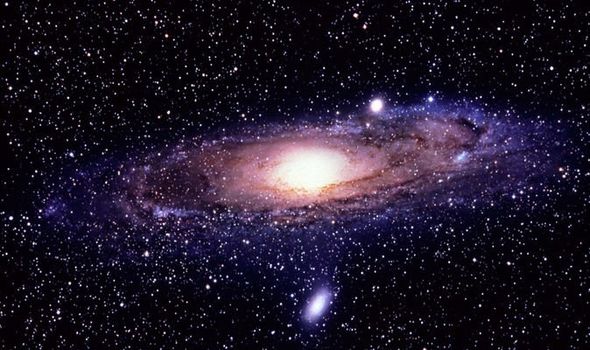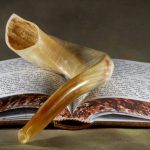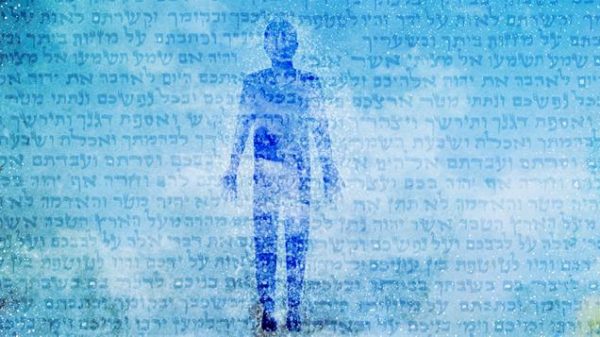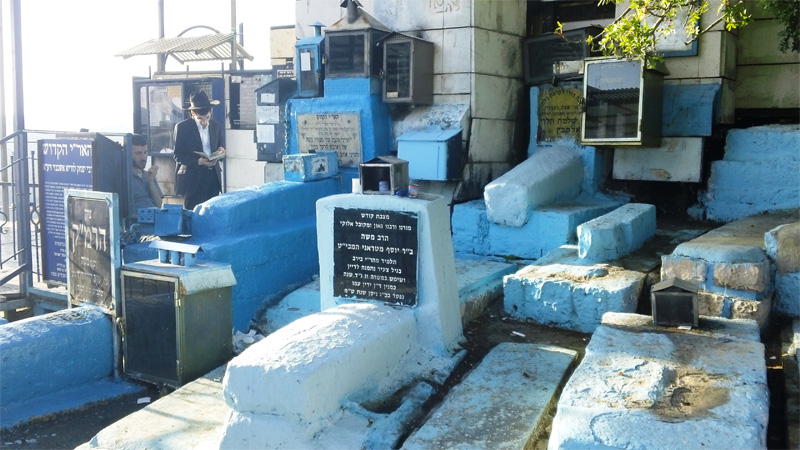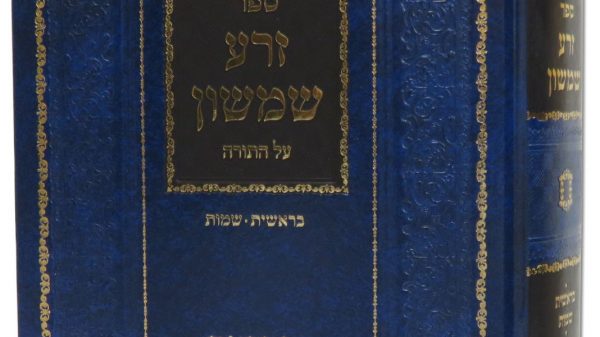Click here to download PDF

What’s Lavan doing in the Haggada?
In the Hagaddah of Pesach we quote the Pasuk, “Arami Oved Avi vayered Mitzrayma” (Devarim 26:5) which the Baal HaHagaddah explains that Lavan was even worse than Pharaoh. Pharaoh only decreed the extermination of the Jewish males and Lavan wanted to “uproot” the whole [Jewish People].Why is this fact that Lavan wanted to uproot the entire Jewish people a part of the Mitzvah of recounting the story of Yetziyas Mitzrayim? Seemingly we should only be concerned with the evildoings of Pharaoh alone. We don’t mention in the Hagaddah how Haman also wanted to kill the entire Jewish People, which means that Lavan’s desire to uproot the whole Jewish People must be connected to Yitziyas Mitzrayim as indeed the Pasuk itself connects them and says that “the Aramenian wanted to destroy my father and he (our forefather) went down to Mitzrayim”. Furthermore, we have to ask ourselves did Lavan literally intend to murder his daughters and grandchildren? Can we be “uprooted” without being exterminated?
The Wall & The Name
After Yaakov and Lavan air their grievances against each other, Yaakov gives the command to gather stones and build a wall (31:45-46). There is something about the wall that is above and beyond securing our borders. It was a symbol that they not cross over to harm each other, but they would cross over for commerce and other beneficial purposes (31:47-52 Rashi there). The wall was a symbol and a testimony. Why is the “wall” which is seemingly just a pragmatic barrier, the very symbol and testimony for the rules of engagement between Yaakov and Lavan? Lavan insists on giving it the Aramaic name of “Yigar Sahadusa” and Yaakov counters with the Hebrew equivalent of “Gal Eid” (31:47). Why are they fighting over a name, especially as the meaning of the name is seemingly identical, just one is in Hebrew and the other is in Aramaic?
Our Aramaic Roots
The Jewish People always spoke Aramaic. It was the prevailing language in Mesopetamia, where Avraham Avinu was from. The Kuzari (2:68) says that Avraham used Hebrew for prayer and other religious practices and conducted all his regular earthly affairs in Aramaic. Undoubtedly, Yaakov spoke to Rachel and Leah in Aramaic as they grew up in the house of Lavan and with this, the Maharsha (chidushei Aggados Megillah 3A D”H Targum shel Torah) explains the deep Jewish connection to Aramaic and what the Gemara means in Megillah, that Onkelus’ translation was actually to put in writing an Aramaic translation of the Torah whose basic rudiments were already received at Sinai. This is further emphasized by the obligation to read Parshas Hashavua twice as it’s written in the Torah and once with Onkelus, which is the halacha of “Shnayim Mikrah V’Echad Targum”. What’s more amazing is that the Gemara says in Sanhedrin (38 B) that even Adam HaRishon spoke Aramaic in addition to Hebrew and this corresponds to what the Gemara also writes there that Adam’s head was formed from the earth of Eretz Yisroel but his torso was formed from the earth of Bavel, where Aramaic is spoken, and the rest of his limbs were from the earth of the rest of the places of the world. What is so special about Aramaic that it is seemingly as ancient and part of our tradition as Hebrew? Why is it that the angels do not relate to prayers said in Aramaic (Shabbos 12 B)? Is it a coincidence that asides from the Mishnah, Tosefta and the Medrashei Halacha, such as the Mechilta, Safra and Sifrei are in Hebrew but the rest of the oral law, the Talmud and the Zohar are in Aramaic? The Gemara says in Sota (49 A) that ever since the Beis Hamikdash was destroyed, every day is worse than the day before but what keeps the world going are Kaddish said after Aggaditah and Kedusha D’Sidra, which is the Kedusha in “Uva Letzion” that is also said over in Aramaic. With all these factors in mind, it is even harder to understand why Yaakov rejected the Aramaic name Lavan gave to the wall, especially as he was in essence calling it the same name, just in Hebrew.
Liberated from Lavan
Lavan seemingly had the last word in the heated exchange between himself and Yaakov. He said, “the girls are my daughters and the children are my children and the flock is my flock and all that you see really belongs to me”. It was in response to this far-reaching all inclusive declaration of Lavan that Yaakov gives the command to gather stones and make a wall. What Lavan tried to do at that point, even after being warned by Hashem to not even talk badly to Yaakov, was to subtly attempt to uproot the entire Jewish national identity by declaring that Yaakov’s entire family and possessions are all really his, meaning: they are Armenians and not a separate nation called the Jewish people. This is how “Lavan was seeking to uproot all”: uprooting the entire concept that there is a separate nation called the Jews. With this we can understand why Yaakov’s response is to build the wall to declare the separateness of the Jewish people. However, we were tainted, not just by Lavan’s statement to which the wall is a counter-measure, but by the fact that we are indeed genetically descended from him. For that reason we had to go down to Mitzrayim which was the ‘Kur haBarzel’ the smelting pot to get out all our impurities, which included our connection to Lavan. With the act of being extracted from Egypt, we were not just separated from the Egyptians, but we were also separated from all the other nations in the world including our connection to Lavan and that is why the story of Lavan is directly related to Yetiyas Mitzrayim and is a part of the Hagaddah.
Separate & Connected?!?
But the situation is far more complex. Even as the separate nation known as the Jewish people, we are still meant to be a light unto the nations and in the future, all nations will renounce their separate individual identities to subjugate themselves to the Jewish nation and to serve Hashem alone. This means that we are not separate from all the nations in a way that we are hermetically sealed off. There is also a form of interface so as the separation is not absolute but rather it’s a one-way wall. We are separate so long as it benefits us physically and spiritually; but when it is for our benefit and the overall well-being of the world, then there are no boundaries to separate us, we go over the wall to influence the entirety of humanity. This was all alluded to in the wall between Yaakov and Lavan. No one crosses the wall to harm anybody. But we do cross the wall for commerce and all constructive good. And this is the secret of the two languages we always carried, Hebrew and Aramaic.
Hebrew
Hebrew is the Holy language and is uniquely ours and is meant to be the language spoken in the Holy land. This is the secret that the books of the written Torah are written in Hebrew as the books of Torah are Holy objects, where Holiness becomes manifest and therefore they must be written in Hebrew (It is true that according to some opinions if the Torah She Bichsav is written in other languages, it can also have a halacha of “Kisvei HaKodesh” a Holy book and according to Rav Shimon ben Gamliel, the only other language it may be written in is Greek but that is only b’dieved and would only be viable as a Kosher “Sefer” to read from to fulfill a Mitzvah like hearing Megillah, if you understand that language. The primary form of the “Kisvei HaKodesh” that would have a halacha of a Holy book, for all Jews, no matter what languages they understand, is only if it’s written in Hebrew). My Rebbe, Maran HaGaon HaRav Moshe Shapira ZT”L, explained to us that this is the secret as to why the Mishnah was also written in Hebrew, even though the Jews in Israel during the second temple period spoke Aramaic, as is evident from the language of the Kesuva and Gittin and most of all, the Zohar that is from the same time period. This is because the Mishnah is where the Torah she Be’al Peh became “like a book” and therefore, it was written in the same language as “Kisvei HaKodesh”. With My Rebbe’s observation it is obvious that the Tosefta, that is, as its name implies, a supplement to the Mishna was written in the same language. Perhaps the Medrashei Halacha like the Mechilta, Safra and Safrei are also in Hebrew because they are built very tightly around the Chumash.
Aramaic
Aramaic is a “twilight” between Hebrew and all other languages (see Yerushalmi Sotah chap 7 Halacha 2). In the words of the Maharal, it is the universal language; it encompasses all. This reflects an aspect that is encoded in the Torah itself. Chazal tell us Hashem looked into the Torah and from there created the world (see Even Shesiya Parashas Bereishis 5778). The Torah is the blue print and life source of all that exists both the Holy and the profane and that is why there always had to be an expression of Torah in Aramaic, to reflect the universal aspect of Torah as it created all and sustains all, and this is the secret behind why Hashem offered the Torah to all the nations before offering it to the Jewish people. This is the secret behind why Adam, first man who is the progenitor of Jew and gentile alike, and controlled the whole world spoke Aramaic. With this we can understand what Chazal were alluding to when they said ‘his head was formed from the earth of the land of Israel; and his main body was formed from Bavel. They Holy land and the Holy language is “at the head”, the top and leadership positon. But Bavel where they spoke Aramaic represents the main body and the all-inclusiveness. By no coincidence that’s where all humanity attempted to unite to usurp Hashem by using Hebrew but after the people and the languages were divided, the ones that remained there in that ‘inclusive place’ spoke Aramaic.
Universal side of Torah
With this the Maharal explains why Angels can not relate to Aramaic. Every angel is a very specific force, as Rashi tells us in Parshas Vayera, that is why multiple angels had to be sent to Avraham, each one with its own unique mission because an angel can not do two different types of missions. Angels are very “energy-specific”. Aramaic is not specific; it is all-inclusive. With this idea also the Maharal explains what the Gemara meant when it said that since the destruction of the Beis HaMikdash, every day is worse than the day before it but what keeps the world going is the Kedusha that is said in Aramaic at the end of davening. The idea is that the Beis HaMikdash is the specific designated interface between the heavenly and the earthly from where all blessing comes from. With the destruction of the Beis HaMikdash, that specific channel was broken and the world lacks a direct source of blessing from the beyond. The Kedusha said in Aramaic invokes the universal nature of Kedusha, as the Torah created everything, the universal nature of Kedusha still somehow trickles down to everything so that we can siphon some life until that time that the specific designated channel of the Beis HaMikdash will be restored.
Written Torah vs Oral Torah
With this we can understand why we the Jewish people held on to Aramaic as it is there as a function of us being universal influencers. Aramaic is not the language for things that are “Kisvei Hakodesh” – Holy books that are manifest Kedusha, but it is to be a spoken language and is the language of Torah SheBaal Peh the aspect of Torah that was never meant to be written as it is the explanation of what is written. Every language adds another nuance of explanation, not just to explain the Torah to that nation, but even we ourselves can sometimes better understand Torah ideas when they are said over in different languages. This is the secret that Moshe Rabbeinu explained the Torah in Ever HaYarden “Ba’er heitiv” or “Be’er es HaTorah hazos”- well explained Rashi says in all seventy languages. The ‘gateway language’ between Hebrew and all other languages is Aramaic. With this the Maharal explains the idea that “Shnayim Mikrah vechad Targum” are parallel to the three places where the Torah was taught in the desert, in the first two times the emphasis was on the written Torah and in the third time the emphasis was on explaining it. The first two times were Sinai and Ohel Moed and the third time was concurrent with Sefer Devarim in Arvos Moav.
Zohar
Ironically the deepest part of Torah is its universal aspect. It is the realm of “Sisrei Torah” – secrets of Torah to explain how from the Torah comes everything, not just the profane and non Holy but even the evil and all that exists, all comes from the Torah and is totally subjugated to Hashem’s dominion (Ramchal; Klach pischei Chochma intro to Pesach 1). This is the secret that the Zohar (which was never meant to be a book like the Mishnah but rather is it to be compared to the Talmud – See Rambam Hilchos Talmud Torah 1:12) which deals with the secrets of Torah was written in Aramaic.
Asserting our unique identity
After Yaakov built the wall symbolizing the separateness of the Jewish people, and yet the borders are open for the purpose of positive influence, Lavan wanted to emphasize the ‘porous aspect’ of the border and give it an Aramaic name which would mean that the Jewish people would remain connected to him. Yaakov insists on giving it a Hebrew name to stress our separateness and this is the secret that we first teach our children Torah Shebichsav that is in Hebrew and then Torah Shebaal Peh that’s in Aramaic because we can only progress to the universal and inclusive and the secrets of Torah that deal with how the Holiness secretly controls everything, only on top of a ‘Rock solid’ foundation of our unique identity and separateness.
Chanukah
The allusions to Chanukah in essence start in this week’s Parsha. Chazal in multiple places and in the “Maoz Tzur” that we sing qualify what the Greeks did to us as “Ufartzu”- they broke in. They breached the Beis HaMikdash walls in 13 places. This was not a coincidence because a generation earlier, the Egyptian-Greeks forced us to take our Torah which was written in Hebrew and translate it into Greek and we had to make 13 changes so as they do not totally misuse the Torah for heresy. That Greek translation eventually became the basis for Christianity and Islam nonetheless. The 13 necessary changes are parallel to the 13 breaches that they made in the Beis HaMikdash. We mentioned earlier that Rav Shimon ben Gamliel holds that the only other language “Kisvei Hakodesh” may be written in is Greek. Greek seeks to compete with Hebrew and usurp Hebrew and parallel to that, Hellenstic culture sought to compete and conquer the Beis HaMikdash symbolizing the realm of Torah and all that is Holy. They were breaking that barrier precedented by the wall between Yaakov and Lavan. When the Chashmonaim drove them out and sealed those breaches, they instituted when facing that breach from the outside, one had to bow to show submission and acceptance that illegal crossing over the border will not be tolerated. But they also instituted the light of Chanukah where the Mitzvah is to put it on the outside of the doorway. The message is: the borders stand firm. There’s the inside of the house representing inner Holy space and there’s the outside profane world, clearly differentiated from each other (Chanukah candles are like Mezuzah, someone who does not have a ‘house’ or a roof over his head is not obligated and has the consolation prize of making a bracha on seeing Chanukah candles). The Chanukah candles are on the outside shining outwards. The message is: the walls of the house stand firm and the profane may not enter the holy. However, the light of Torah does cross that border to shine outside. It’s a one-way border. Nothing will defile the Holy, but the light of Torah will shine outwards and light up the outside world.

